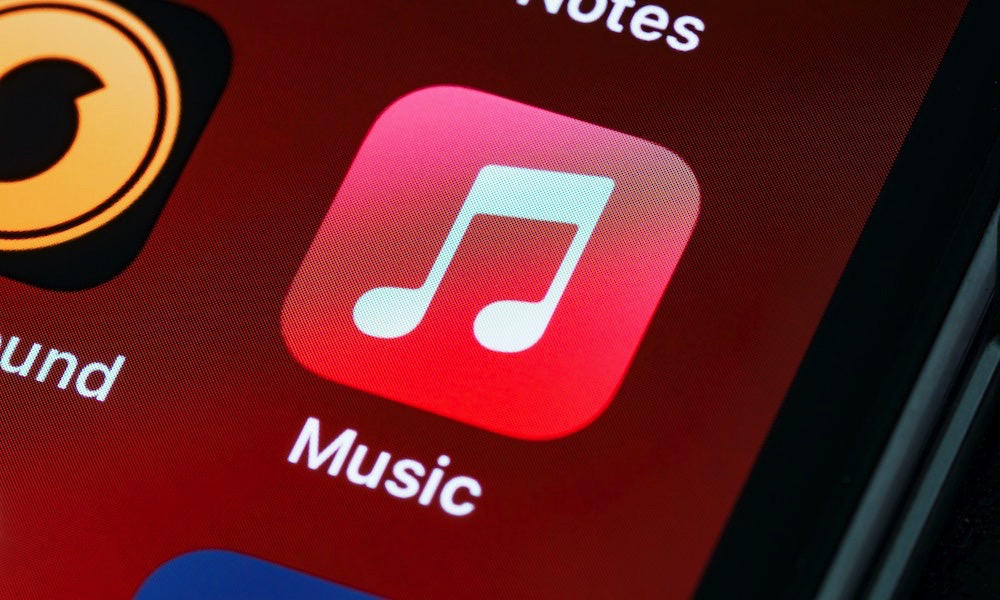iOS 15.6 Will Fix This Small (But Annoying) Apple Music Bug
 Credit: Brett Jordan / Unsplash
Credit: Brett Jordan / Unsplash
Toggle Dark Mode
A minor but irritating behavior in iOS was brought to light a few weeks ago that raised a few eyebrows and sparked a theory that Apple was giving preferential treatment to Apple Music.
Apple’s Music app is pre-installed on new iPhones, filling the same right-most position in the dock it’s been in since it was called the “iPod” app on the original iPhone in 2007.
Of course, users have long been able to reorganize their home screens, and a few years ago, Apple even added the ability to remove the built-in apps, including Apple Music. With numerous competing music apps available, it wasn’t uncommon for some folks to remove Apple’s Music entirely in favor of something like Spotify.
However, a few weeks ago, some discovered that reinstalling Apple’s first-party Music app from the App Store would put it right back in its original position in the dock, bumping out what was already there.
Some took the more cynical take of crying foul, accusing Apple of giving preferential treatment to its own apps. This seemed especially insidious to folks who had chosen to drop Spotify into that same slot since Apple Music would immediately push out Spotify as soon as it returned.
To be clear, reinstalling Apple’s Music app wasn’t specifically targeting Spotify or any other music app; it merely went into its default position in the dock, replacing whatever was already sitting there. In my case, it supplanted Apple’s own Messages app since that’s what I usually keep in that spot.
The reality is that this was much more likely a case of Hanlon’s razor, an adage that states that one should “never attribute to malice that which is adequately explained by stupidity.” It’s an extension of the idea that the simplest solution is often the correct one — in this case, a bug on Apple’s part rather than intentional behavior.
After all, iOS is a complicated piece of software with many moving parts. It’s not unreasonable to assume that Apple had overlooked a piece of code that automatically puts pre-installed apps into their default positions.
What’s more, it wasn’t only Apple’s Music app that was affected by this. Calendar, Reminders, and several other Apple apps would all take up their default positions on the Home Screen whenever they were re-added. This was also triggered when re-adding these apps from the App Library, not just re-downloading them from the App Store.
When the issue first came to light last month, the folks at 9to5Mac dug into the code in iOS 15 and discovered an internal file with the default position of each app on the Home Screen. This file is intended to help organize your apps after you restore your iPhone or use the Reset Home Screen Layout option found in Settings > General > Transfer or Reset iPhone.
Hence, this file serves an essential purpose, but as 9to5Mac notes, “it appears that Apple simply never tested what would happen if you reinstall a stock app from the dock after deleting it.”
This behavior also predates iOS 15. Things have probably worked this way ever since Apple introduced the ability to delete stock apps six years ago with the release of iOS 10. I noticed early on with iOS 14 that both Calendars and Reminders would return to their default positions on the first Home Screen when re-added from the new App Library, but I never really gave it much thought.
Nevertheless, it’s odd and inconsistent behavior. Third-party apps always go into the first available slot on the first Home Screen page with room for it. Only Apple’s first-party apps seem to want to insert themselves into the first page or the dock, and even then, this only happens with some of them.
The good news is that in what I’m sure is at least partially an attempt to avoid any appearance of evil, Apple has fixed this in the second iOS 15.6 beta that was released earlier this week.
I use Fantastical as my primary calendar app but occasionally fall back to using the stock Calendar app for testing. Shortly after installing the latest iOS 15.6 beta update, I re-added my Calendar app to the Home Screen, and was surprised to find it landed on the first empty spot on my third page of app icons rather than inserting itself into the top row of my first Home Screen as it had always done before.
As YouTuber Aaron Zollo shared yesterday, the same also applies to Apple’s Music app and likely the other first-party Apple apps previously affected by this.







